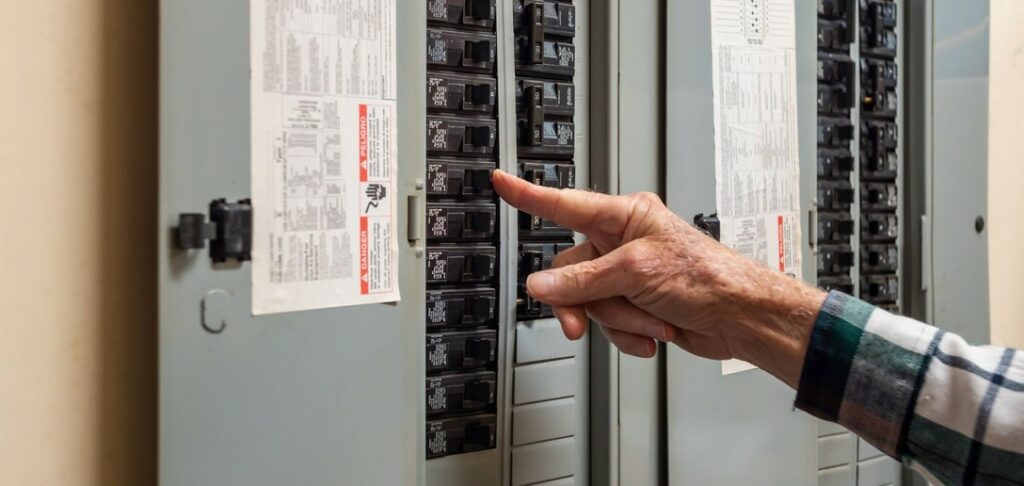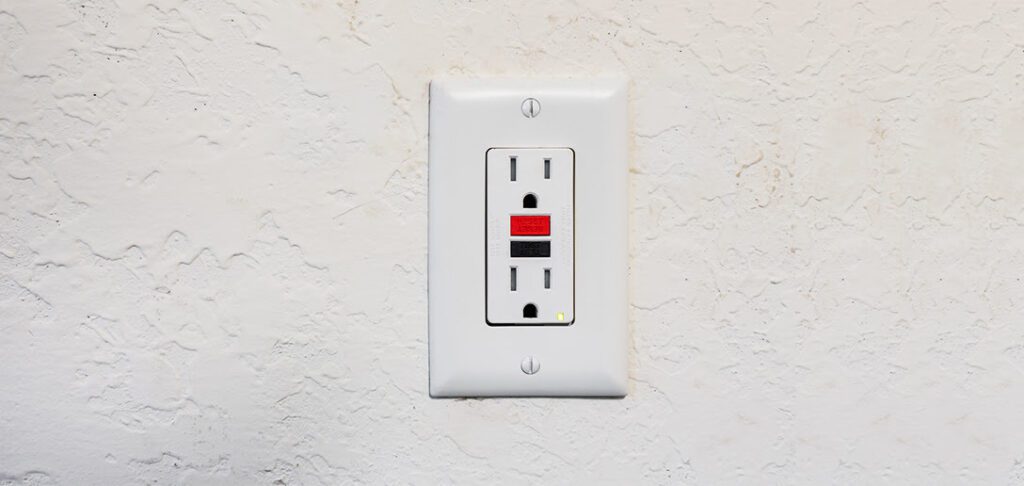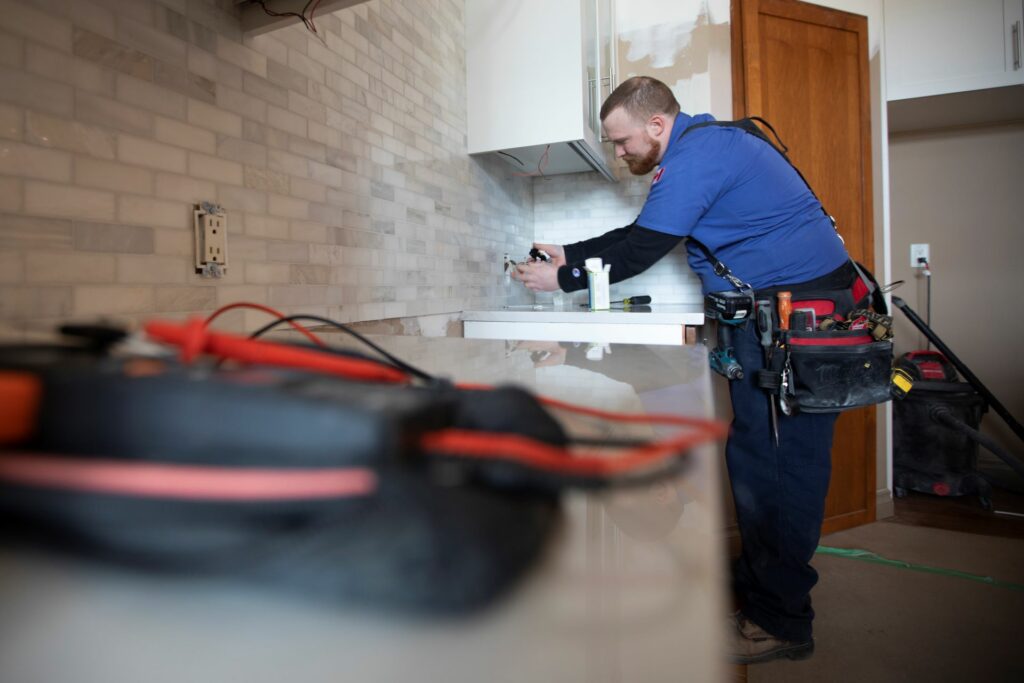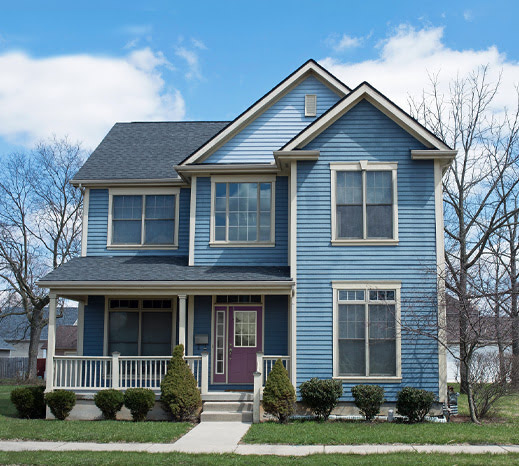Older homes have a certain style and character that can be incredibly endearing, and their lower price tags often make homeownership much more plausible. Although living in these older homes can be a rewarding experience, they also come with some potential issues—including the condition of their electrical wiring.
The electrical wiring in homes built in the early 1900s was vastly different from the wiring we need to power our homes today. As a result, certain electrical problems can pop up for homeowners living in these older houses. Luckily, trained electricians have solutions for these common problems—read on to learn what to do if you live in a home from this era!
See Also:

A Few Fuses Short: Older Homes with Fuse Boxes
Homes built before the 1960s had fuse boxes installed that powered 60 amp service with four fuses, or sometimes only 30 amp service with two fuses. For this era, these levels would easily power a home—one with a single television, a fridge, and an oven. But our modern day setups require much more electricity to properly function, so newer builds use circuit breakers instead of fuse boxes to better handle the increased electrical needs.
If your home still has a fuse box, you’re likely overloading the system when you use modern appliances or fixtures and may experience recurrent outages as a result. To get a clearer picture on this common issue in older homes, let’s clear up what a fuse box is and how they work.
What Are Fuse Boxes?
Fuse boxes are a type of electrical service panel that act as a control board for electricity within a home. Fuse boxes in the early half of the 1900s provided enough electricity to power the minimal appliances and lighting in homes of that era, but modern conveniences may overload this older electrical system consistently.
How Do Fuse Boxes Work?
In the fuse box, fuses are made to “blow” when the amount of electrical current flowing through a circuit exceeds the rating of the fuse. This is used as a safety precaution to prevent fires and electrical dangers. Due to the increase in electrical usage in today’s society, these fuses can “blow” quite often, meaning it may be time to upgrade to a circuit breaker panel.
Are They Safe?
For the most part, fuse boxes are considered to be safe, although they need to be properly maintained in order to sustain safe usage. Consistent monitoring for frayed wires or short circuits can keep your home from experiencing potentially dangerous electrical problems—but upgrading to a circuit breaker is still recommended if you want to avoid the inconvenience of frequent power outages.
See Also:

Two Slots Just Aren’t Enough: The Case for Upgrading Outlets
Have you ever noticed the number of slots on your electrical outlets? If you’re only seeing two slots per plug-in, that’s a key sign your home was built before the 1960s when electrical upgrades took a substantial turn.
Three-pronged receptacles are the standard for homes today due to their ability to properly ground the current running through that outlet. This is an incredibly important safety feature that prevents electricity from going to places it shouldn’t.
If your home only has two prong receptacles, we recommend upgrading your electrical outlets to avoid power surges that can affect you or your electrical devices. If you’re worried about power surges, you can have a whole-home surge protector installed in your home that ensures safety for the people and devices in your home.
How Low Can You Go? Replacing Old Low-Voltage Switches
Another common wiring issue in homes built prior to the 1960s was the use of low voltage switches. These odd-looking devices usually came with four switches on a single plate—and while these switches don’t necessarily pose any real electrical risk, they are at the end of their serviceable lifespan.
Most manufacturers have veered away from these devices, making repairs and replacements a challenge for homeowners. If your low voltage switches stop working, you will likely need to have them updated and re-wired to standard ones.
Old Wiring in Calgary Homes
Did you know Calgary was the first Albertan city to adopt electricity? In the 1880s and 90s, Albertan cities struck deals to provide electricity to their cities—and as Calgary’s population boomed in the 1900s, so did the use of knob and tube wiring in homes.

What Is Knob and Tube Wiring?
Knob and tube wiring was an early method of electrical wiring in the early 1900s, which consisted of single-insulated copper conductors that ran within the wall or ceiling cavities, and passed through joint and stud drill-holes by way of protective porcelain cylinders. The porcelain prevented wires from touching flammable things, such as drywall or wood.
Safety Issues of Knob and Tube Wiring
Like the two prong electrical outlets, knob and tube wiring does not have grounding capabilities, meaning electricity flowing through this type of wiring can damage your electrical devices. In more severe cases, it can expose you to electrical shocks or electrocution.
How to Check Your Home’s Wiring
Not sure if your older home has knob and tube wiring? There’s a simple way of checking. Check the basement or the attic for any exposed joists. If there are white, porcelain knobs with electrical wires running between them, then you have knob and tube wiring in your home.
Knob and tube wiring isn’t capable of handling the electrical needs of today’s homes—and due to its outdated safety standards, it can be hard to get insurance on your home with this type of wiring installed. We recommend having a professional inspection on your home to protect your safety and liability.
Modernize Your Home’s Wiring
If you’re thinking of buying (or have already purchased) a home that was built between the 1900s and 1950s, it’s important to take note of the home’s wiring and how it will work for you and your electrical needs.
We recommend you upgrade from a fuse box to a circuit breaker, replace your two prong receptacles with three prong, and consider updating your home’s wiring system if it still uses a knob and tube system. Our certified electricians at 4 Star Electric can assist you in each of these upgrades. Book an appointment with us for help with these common wiring issues in old homes!


